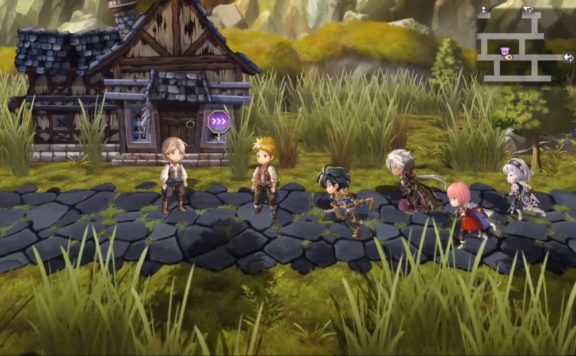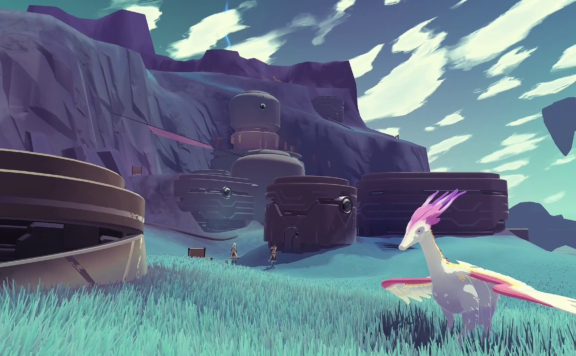Before we jump into Persona 3 Reload, let’s take a quick look back at the past. On July 13, 2006, a very entertaining game launched in Japan: the original Persona 3. The rest of the world only got a chance to try it out a few years later. Atlus released something phenomenal, a project that tells the story about the value of life and acceptance of death, and of appreciating the time allotted to us.
Later the game received P3 FES & PSP versions that not only enjoyed some changes like an option to choose a female protagonist, but also got a playable afterword.
A bit over a week ago, Persona 3 Reload was released. Players are in for a stylish remake of the original P3, alas, without the changes introduced in the FES-version. For anyone that had not played the original, FES or PSP-version, this is truly a worthwhile release.
At the center of this story is our protagonist who transfers to the Gekkoukan High School and witnesses something unusual during his very first night in the new place. At midnight, the world suddenly froze in time and people were “transmogrified” into coffins. However, our hero decided not to pay much attention to this phenomenon and hurried back to the dorms.
The truth is that there exists the Dark Hour, a mysterious period between the end of one day and the start of the next, that is ruled by the Shadows. Due to their influence, people become apathetic and listless, with victims being referred to as “the Lost”. During this Dark Hour the school transforms into a huge, surreal tower called Tartarus.
The protagonist meets an unusual boy in a prison uniform that asks him to sign a “contract”. In the contract, you are given a choice of name between two options. Both are canon, one from the original game, the other from the anime adaptation, each with an interesting hidden meaning.
Our protagonist is then offered to join S.E.E.S., a special detachment capable of fighting Shadows during the 25th hour. The hero quickly discovers the ability to summon a Persona, however, things don’t go smoothly and during the very first summoning something tears through the protagonist’s Persona and breaks out…
All of the above is just the very beginning of an extremely involved plot that offers a long, pleasant, sometimes cheerful, sometimes tragic and heavy journey. The game’s story was carried over exclusively from the original Persona 3, and the contents of the enhanced version, Persona 3 FES, didn’t make it in. That is why you will not be able to find an option of a female protagonist or the playable epilogue – The Answer – within the game. The fans have managed to find the references to the epilogue in the game files, so it is not impossible that it might be released as a separate DLC at a later point.

When it comes to the technical state, P3Reload became more modern, with the entire game being completely redrawn and built up in 3D. Everything, from characters to the city districts and combat scenes, got made anew with the graphics being similar to those of Persona 5.
The original game featured most of the locations as a 2D backdrop which made the movement against them look strange and jarring, but now we have an opportunity to walk through fully drawn 3D locations with a third-person view. Each location provides a minimap – previously, only available in Tartarus. Each zone is beautiful in its own way, alive and whole with no feeling of wrongness.
In addition to the general graphics and the update that was rolled out for the locations, the game also reworked a million little things: menus, the voice acting of minor characters and even small conversations and gossip, which I am extremely grateful to Atlus about.
The game now actually feels alive where before there was static and passiveness. All conversations, from social connections to chats with friends, to simple whispers, became more lively, with the added voice acting being a big bonus.
The only pity is that Social Connections themselves have not undergone much development and have been left unchanged since the original P3. In P5, increasing levels unlocks new features and items, here you only need it to acquire bonuses from merging certain types of personas. The bonuses are nothing to sneeze at, and the scenes during meetings are quite funny, so you can spend time chatting with friends with some pleasure.

Much as it was in the original, the game forces you to devote a lot of attention to time management, and it is up to you what to do during the school year. Would you decide to go to Tartarus or maybe spend some time with your friends? Develop social connections, or maybe improve your characteristics to gain access to new locations?
It is only during the day that you can sit in the library or visit the old chaps at the bookstore, and at night you can either go to a karaoke bar to increase your courage or sit in a burger joint or even work in a cafe part-time. The story arcs of Friends and Arcana are full of content: there is a touching story of the elderly couple from a book store, a love tragedy between a student and a teacher, a little girl’s family problems, and a manager of an athletics club recognizing destiny. Each of these stories and characters make you feel emotions that stay with you for a long time. Some old arcs and social connections have been refined, given a nicer look and some additional content.
It is only during the evening that you are allowed to leave the dorms and venture into Tartarus, the place where you fight Shadows and prepare to face bosses.
Tartarus itself remained largely unchanged, however, Reload massively enhanced the battle system. It became much more impressive and spectacular, with Atlus introducing several important innovations. Not only can you control the entire squad, but you can swap to only controlling the protag and leaving your party members to auto-combat, where they will heal, attack and defend depending on their Persona.
The original game only allowed players to control the protagonist, making it clear that your party members are their own people. Many people didn’t like that and addressed it by patching their game, but after playing like this I have accepted this style of combat and even began to like it. I’m glad to see that players were given a choice in this regard.

The main mechanics didn’t change much: you encounter a new creature, try all the attacks on it and over time find its weakness: some are afraid of fire, others lose a lot of health from being frozen and so forth. If a weakness can be found, the opponent is stunned, and when all enemies are knocked down, you can make a joint attack and severely injure all opponents.
The remake also introduced a system similar to the Baton Pass from Persona 5. If you stun a target with one character, you can swap the turn to any of the companions so that they continue the chain and hit the weak spot. This makes battles much more fun and allows you to fight more effectively: not all Personas master all the elements, and with this system, stunning a whole group of enemies in one turn is much easier.
Another option will unlock after defeating the second story boss – or bosses, to be precise – and it is called theurgy. Each character gets a scale next to their portrait that is filled with certain actions unique to all heroes. For Yukari, it is all about healing herself and her friends. If done enough, she will be able to unleash devastating wind damage. Mitsuru must apply negative statuses to enemies, and then a powerful ice attack will become available to her.
The activation of each theurgy is accompanied by a spectacular in-engine cutscene. The somewhat tedious process of clearing out Tartarus certainly becomes more fun with these options.
In addition to the most noticeable changes, Persona 3 Reload is full of other enhancements that are less significant but nevertheless make the title’s gameplay that much more enjoyable. For example, Elizabeth’s tasks became easier, especially those that were tied to certain dates. Meanwhile, cards with prizes that are issued for battles in Tartarus now allow you to receive even more bonuses and act as one of the main sources of money and experience in the game.
However, the most impressive glow up is the interface. Every point of the menu looks no less snazzy than in Persona 5.
The game features an amazing OST that didn’t change much from its original version. There are a few remixes while the majority of tracks have migrated right from P3. The composition Burn My Dread in particular warms my soul. You can find a compilation of all tracks online if you are willing to give it a listen.
In the end, we have a very stylish and pleasant remake of the good old game with no plot changes, only minor touches and corrections to narrative. The battle system received a great overhaul that made it even more pleasant and convenient.
Overall, the title became more modern, leaving players to experience the same story and thoughts that authors wanted to convey but with all the new quality of life features.
For anyone that has not played the original P3/FES/Portable, this is a great way to experience the game. For those, who have already played, it is an opportunity to explore it from a different perspective. For example, here’s what happened with the character models. Just imagine what happened to everything else… Check out the official site to find out more.








